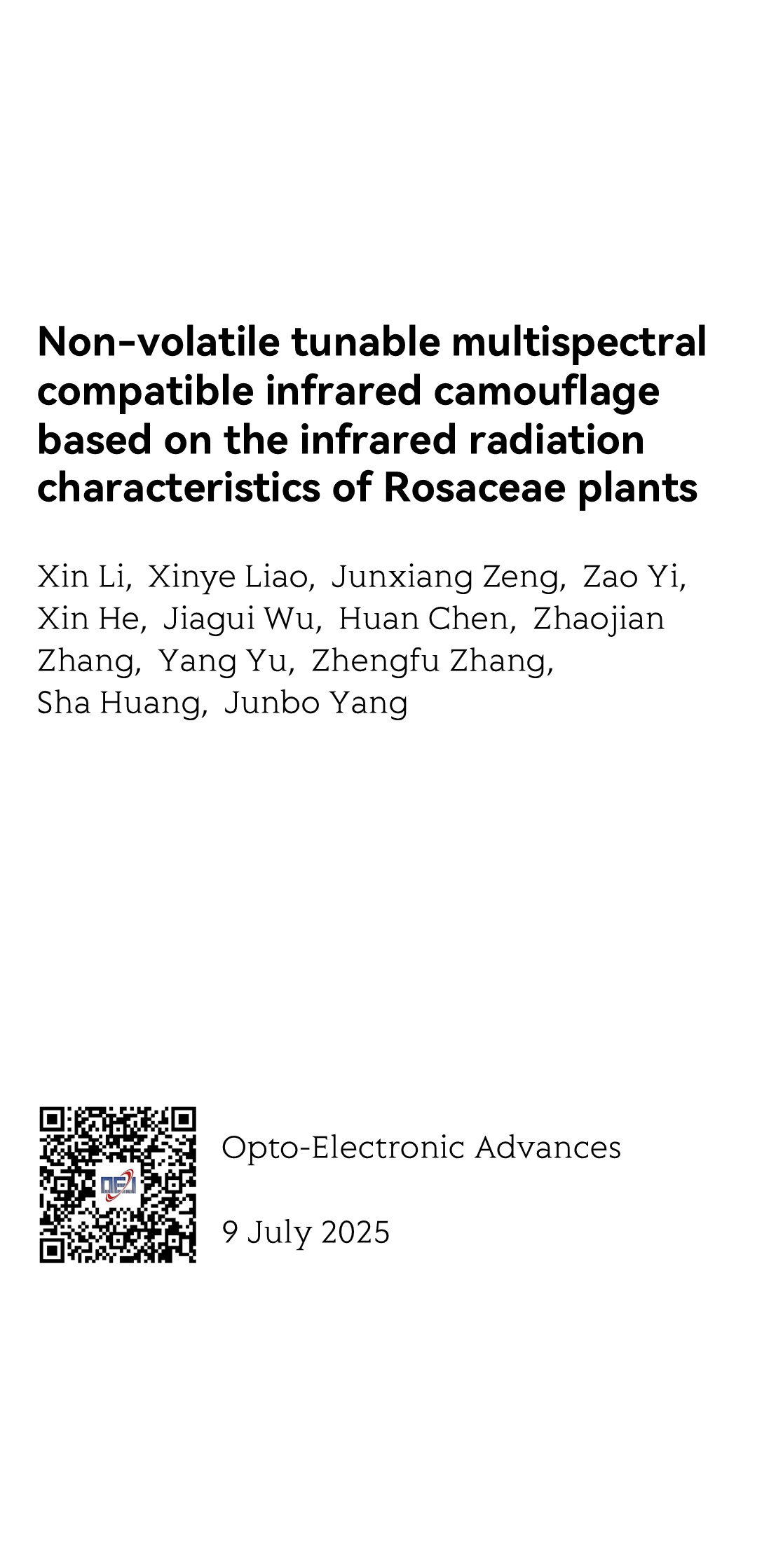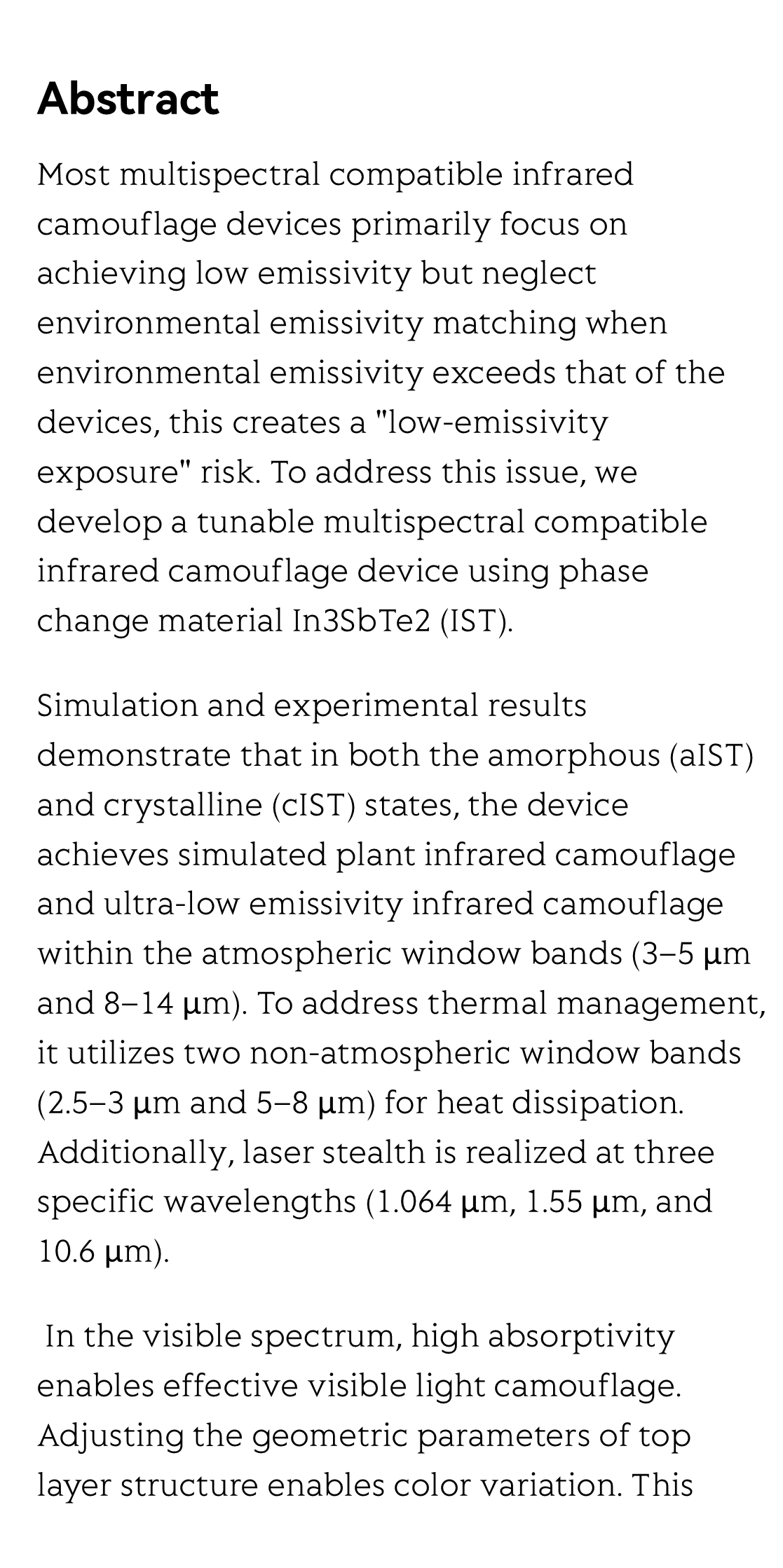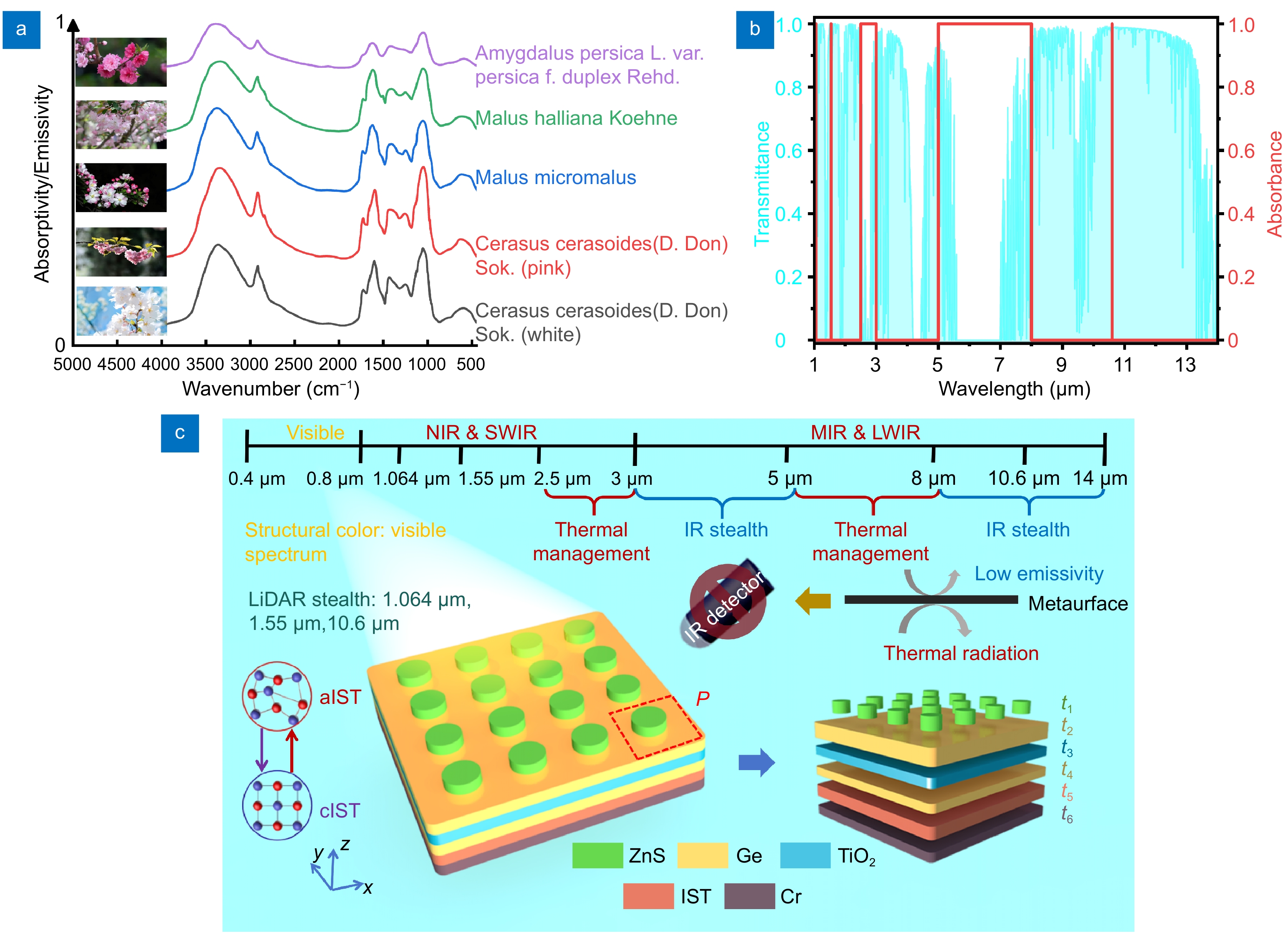(Peer-Reviewed) Non-volatile tunable multispectral compatible infrared camouflage based on the infrared radiation characteristics of Rosaceae plants
Xin Li 李鑫 ¹, Xinye Liao 廖欣叶 ¹, Junxiang Zeng 曾俊翔 ¹, Zao Yi 易早 ², Xin He 何新 ¹, Jiagui Wu 吴加贵 ³, Huan Chen 陈欢 ¹, Zhaojian Zhang 张兆健 ¹, Yang Yu 于洋 ¹, Zhengfu Zhang 张振福 ¹, Sha Huang 黄沙 ¹, Junbo Yang 杨俊波 ¹
¹ College of Science, National University of Defense Technology, Changsha 410073, China
中国 长沙 国防科技大学理学院
² Joint Laboratory for Extreme Conditions Matter Properties, Southwest University of Science and Technology, Mianyang 621010, China
中国 绵阳 西南科技大学 极端条件物质特性联合实验室
³ School of Physical Science and Technology, Southwest University, Chongqing 400715, China
中国 重庆 西南大学物理科学与技术学院
Opto-Electronic Advances, 2025-07-09
Abstract
Most multispectral compatible infrared camouflage devices primarily focus on achieving low emissivity but neglect environmental emissivity matching when environmental emissivity exceeds that of the devices, this creates a "low-emissivity exposure" risk. To address this issue, we develop a tunable multispectral compatible infrared camouflage device using phase change material In3SbTe2 (IST).
Simulation and experimental results demonstrate that in both the amorphous (aIST) and crystalline (cIST) states, the device achieves simulated plant infrared camouflage and ultra-low emissivity infrared camouflage within the atmospheric window bands (3–5 µm and 8–14 µm). To address thermal management, it utilizes two non-atmospheric window bands (2.5–3 µm and 5–8 µm) for heat dissipation. Additionally, laser stealth is realized at three specific wavelengths (1.064 µm, 1.55 µm, and 10.6 µm).
In the visible spectrum, high absorptivity enables effective visible light camouflage. Adjusting the geometric parameters of top layer structure enables color variation. This work not only highlights potential applications in reversible switching, reconfigurable imaging, and dynamic coding using IST but also offers an effective strategy to counter multispectral detection technology.
Flicker minimization in power-saving displays enabled by measurement of difference in flexoelectric coefficients and displacement-current in positive dielectric anisotropy liquid crystals
Junho Jung, HaYoung Jung, GyuRi Choi, HanByeol Park, Sun-Mi Park, Ki-Sun Kwon, Heui-Seok Jin, Dong-Jin Lee, Hoon Jeong, JeongKi Park, Byeong Koo Kim, Seung Hee Lee, MinSu Kim
Opto-Electronic Advances
2025-09-25
Dual-frequency angular-multiplexed fringe projection profilometry with deep learning: breaking hardware limits for ultra-high-speed 3D imaging
Wenwu Chen, Yifan Liu, Shijie Feng, Wei Yin, Jiaming Qian, Yixuan Li, Hang Zhang, Maciej Trusiak, Malgorzata Kujawinska, Qian Chen, Chao Zuo
Opto-Electronic Advances
2025-09-25







